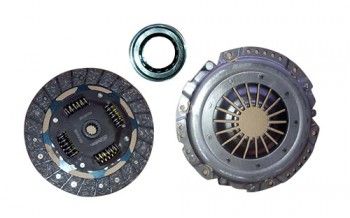Exploring the Versatility and Functionality of Clutches
Clutches are fundamental mechanical devices found in various applications, from automotive vehicles to industrial machinery. These versatile components play a crucial role in power transmission by connecting and disconnecting rotating shafts, enabling control over motion and torque. In this article, we will delve into the world of clutch, exploring their functionality, types, and diverse applications.

Understanding the Function of Clutches
At its core, a clutch is a mechanism that engages or disengages power transmission between two rotating shafts. It allows for smooth and efficient transfer of rotational energy from the engine or motor to the driven component. By engaging the clutch, the two shafts become linked, allowing power to be transmitted. Disengaging the clutch separates the shafts, interrupting power transfer.
Types of Clutches
Clutches come in various designs, each suited for specific applications and operating conditions. Here are some commonly used types:
Friction Clutches: These clutches use frictional forces to engage or disengage power transmission. They typically consist of a pressure plate, friction disc, and a release mechanism. When the pressure plate applies force to the friction disc, it engages the clutch. Releasing the pressure disengages the clutch. Friction clutches are commonly found in manual transmissions of vehicles.
Electromagnetic Clutches: These clutches utilize an electromagnetic field to engage or disengage power transmission. They consist of a coil, an armature plate, and a rotor. When the coil is energized, it creates a magnetic field, attracting the armature plate and engaging the clutch. When the coil is de-energized, the clutch disengages. Electromagnetic clutches are often used in applications requiring precise control, such as industrial machinery and automatic transmissions.
Hydraulic Clutches: Hydraulic clutches use hydraulic fluid to engage or disengage power transmission. They employ hydraulic pressure to activate the clutch mechanism, providing smooth and efficient operation. Hydraulic clutches are commonly used in heavy-duty applications, such as construction equipment and agricultural machinery.
Centrifugal Clutches: These clutches utilize centrifugal forces to engage power transmission. They consist of weighted arms that, as rotational speed increases, move outward, engaging the clutch. When the speed decreases, the arms retract, disengaging the clutch. Centrifugal clutches are often found in small engines, such as chainsaws and go-karts.
Applications of Clutches
Clutches find widespread use across various industries and applications:
Automotive: Clutches are a vital component in vehicle transmissions, allowing for smooth gear changes and power transfer between the engine and wheels.
Industrial Machinery: Clutches are used in industrial equipment such as machine tools, conveyor systems, and printing presses to control the engagement and disengagement of power transmission.
Agriculture: Clutches play a crucial role in agricultural machinery, including tractors and harvesters, enabling efficient power transfer to different attachments and implements.
Marine: Clutches are employed in marine propulsion systems to engage or disengage power transmission between the engine and the propeller, allowing for speed control and maneuverability.
Aerospace: Clutches are utilized in aerospace applications for functions such as engaging auxiliary systems, controlling engine power, and facilitating smooth landing gear operation.
Conclusion
Clutches are essential components in power transmission systems, enabling the smooth engagement and disengagement of rotational energy. Their versatility and functionality make them vital in a wide range of applications, from automotive vehicles to industrial machinery and beyond.
Understanding the different types of clutches and their specific applications can help in selecting the right clutch for a particular system. With ongoing advancements in technology, clutches continue to evolve, providing improved efficiency.
288
0
0

Comments
All Comments (0)